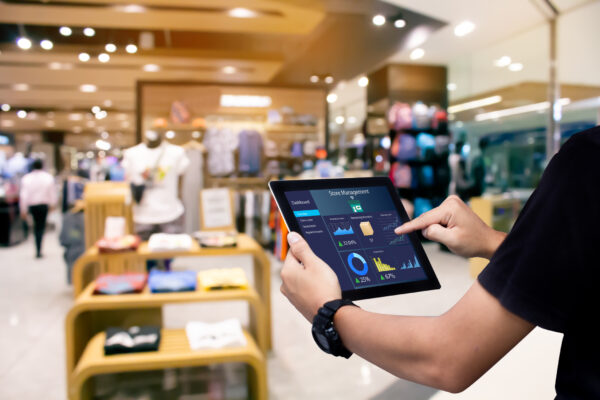In today’s digital age, customers are looking for unique experiences when it comes to shopping and retailers are finding it challenging to offer experiences that differentiate them from their competitors. This is where immersive experiences come in. Sure, technologies like Augmented Reality (AR) and Virtual Reality (VR) have been around for some time, but their applications in retail have only started gaining traction.
AR and VR are immersive technologies that allow customers to interact with products and brands in a virtual environment. They have the potential to enhance the shopping experience by providing an engaging and interactive experience. By leveraging these technologies, brands can create unique and memorable experiences that set them apart from their competitors.
Experiential Retail Ideas
According to a report from Mobile Marketer, retailers are slowly adopting AR in the buying process. Only 1% of retailers are currently using AR or VR in their customer buying experience, yet 71% of consumers say they would be more likely to shop with brands that incorporate these experiences (ThinkMobile). Here are some examples of ways your brand can integrate immersive technologies into your shopping experience.
Product Visualization & Customization
Product visualization and customization have become increasingly popular as businesses seek to provide customers with more engaging and personalized experiences.
With VR, customers can enter a virtual environment and see the product in a simulated setting, giving customers the opportunity to better understand the product and its features and give them a more engaging experience.
As for product customization, retailers can create a 3D product visualization tool via their website to allow users to hone in on specific elements of the product, or even customize the various elements.
Utilizing AR technology, customers can see how different designs or colors would look before making a purchase, i.e., paint colors on their walls, custom car designs, or customizable shoes, all within the context of their specific physical environment. With VR, customers can enter a virtual environment where they can design and customize their products in a more immersive way. Again, both help develop that customer experience and boost satisfaction and loyalty.
Gamification
Gamification is the process of adding game-like elements to non-game contexts. This can be a powerful tool for brands looking to create an engaging and interactive shopping experience. By leveraging AR and VR, brands can create immersive games that are related to their products. For example, a sports brand could create an AR game that allows customers to practice their golf swing.
Retailers can also incorporate prizes into these experiences further incentivizing customers to engage, offering discounts or coupons upon completion of specific tasks.
Interactive Displays
Interactive displays are an excellent way to engage customers and provide them with additional information about products. By leveraging AR, brands can create interactive displays that allow customers to explore the product in more detail. For example, a car brand could create an interactive display that allows customers to explore the car’s features, such as the engine and interior.
Virtual Showrooms and Fitting Rooms
Virtual showrooms are an excellent way to showcase products in a virtual environment. Customers can explore the products in 3D, customize them, and even try them on virtually. This can be particularly useful for brands that sell products that are difficult to display in a physical store. For example, a furniture brand could create a virtual showroom that allows customers to see how a particular piece of furniture would look in their home.
Another application is virtual try-on. Virtual fitting rooms allow customers to try on clothes virtually, without the need to physically change into them. This can be particularly useful for online retailers, as it allows customers to see how a particular outfit would look on them before making a purchase. By leveraging AR and machine vision, retailers can map products to the customer’s figure so the customer can see themselves in the outfit, and even customize it to fit their preferences.
AR-enabled Product Catalogs
AR-enabled product catalogs can be an effective way to showcase products and their features. Customers can scan the product using their mobile device, and an AR overlay will appear on the screen, providing additional information about the product. For example, a fashion brand could create an AR-enabled product catalog that allows customers to see how a particular outfit would look on them.
Co-Branded Experiences
Brands are always looking for ways to reach new markers and clientele. By co-branding a virtual experience in a place like the Metaverse, multiple retailers can target the same audiences and leverage each other’s reach across different channels. Events could include product announcements, collaboration efforts, educational sessions and conferences, product showrooms, and even networking events.
AR and VR can enhance the retail industry by providing customers with an immersive and interactive shopping experience and brands can differentiate themselves from their competitors by creating a unique and memorable experience for their customers.

